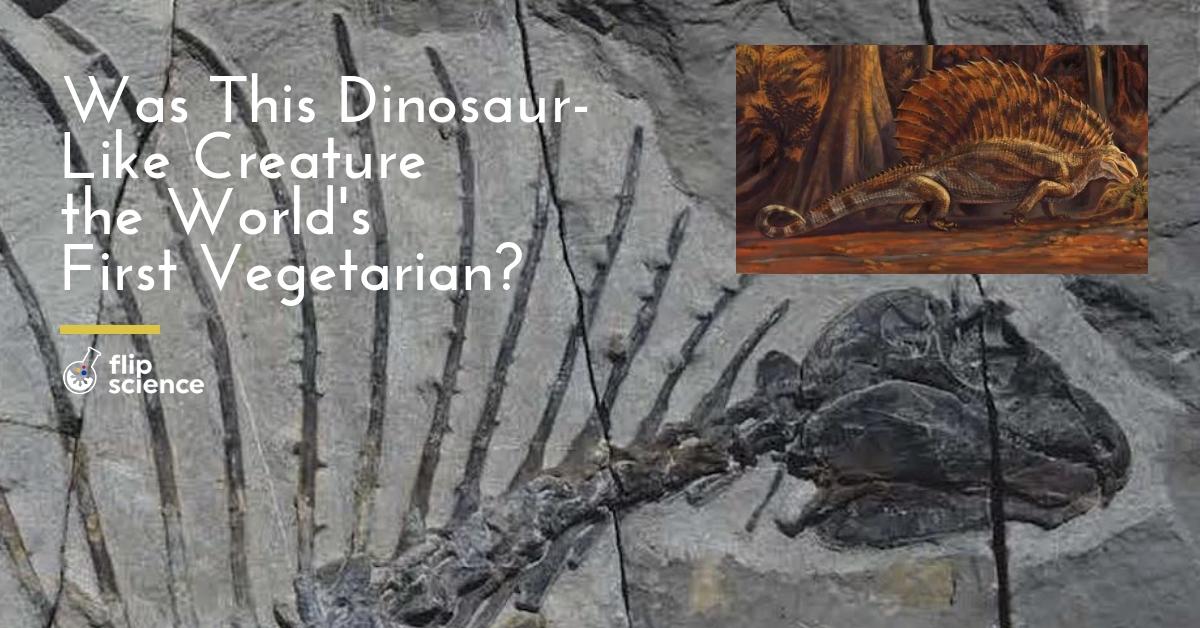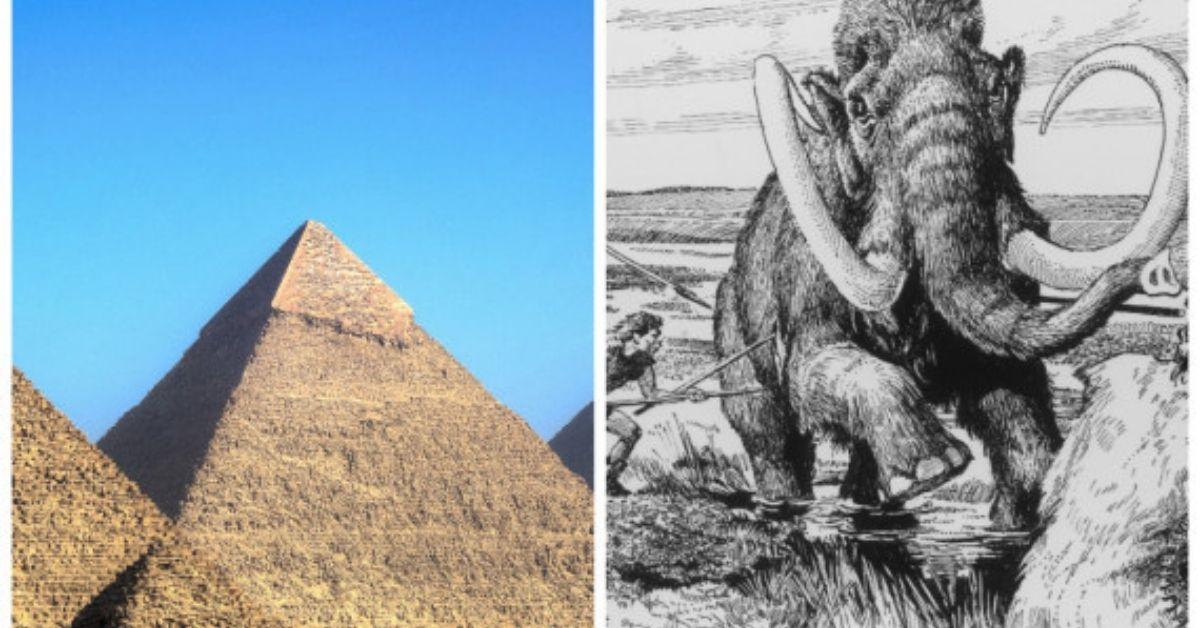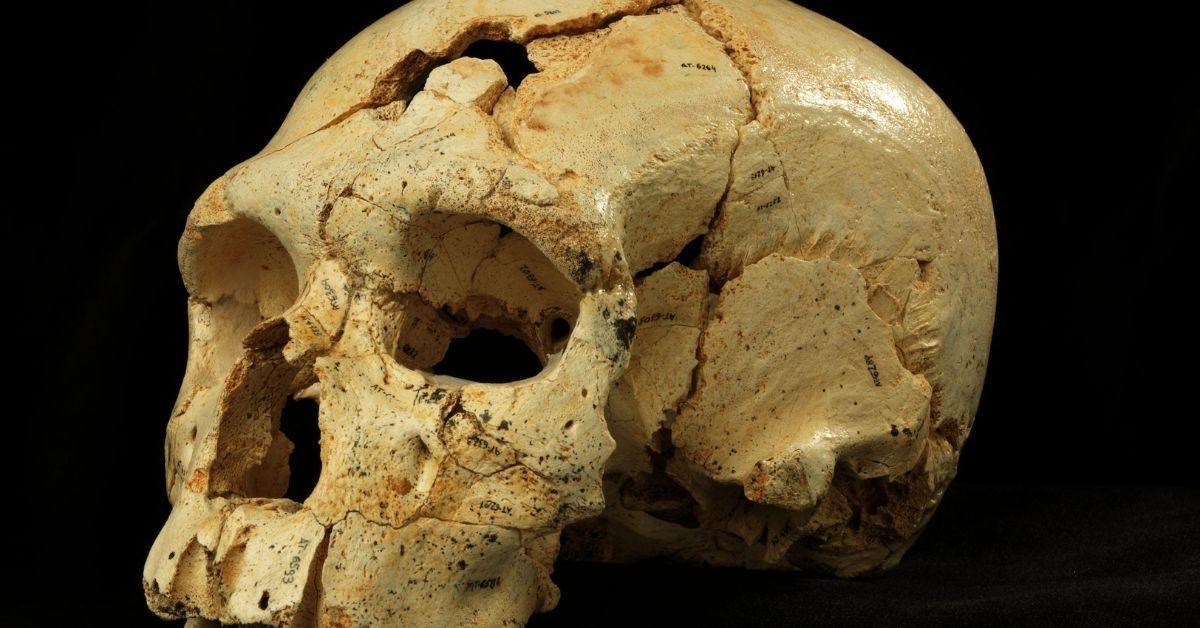Meet humanity’s distant relative Gordodon kraineri, a sail-backed, dinosaur-like reptile that lived in the Permian era. This mammalian cousin, whose name took inspiration from its teeth, is the oldest vegetarian tetrapod in the fossil record.
One look at Gordodon kraineri would probably conjure up a mental image of the extinct reptile perched mightily on a rock, with a hapless amphibian in its jaws. In reality, though, the Permian-era pelycosaur preferred munching on prehistoric plants.
As revealed by the New Mexico Museum of Natural History and a paper published in Palaeontologia Electronica, Gordodon‘s teeth and jaw structure indicate that it was an herbivore — the earliest example of a tetrapod (four-legged) plant-eater ever found.

Artist’s rendition of Gordodon kraineri. Image: Matt Celeskey/New Mexico Museum of Natural History
The tooth of the matter
Gordodon pulls its genus name from the words gordo (Spanish for “fat”) and odon (Greek for “tooth”). It also references Alamogordo, the city where Gordodon‘s 300-million-year-old remains were discovered. Meanwhile, its species name, kraineri, honors geologist Karl Krainer. Krainer significantly contributed to what we know about prehistoric New Mexico.
Unlike its more popular, steak-knife-toothed cousin Dimetrodon, Gordodon had a row of small teeth inside its mouth. However, Gordodon also had larger, pointed teeth at the tip of its snout, like incisors.
“Gordodon has a large diastema (gap) in its jaws between the cropping incisor-like teeth at the front of its mouth and the peg-like teeth at the back,” said paleontologist Matt Celeskey, study co-author. “We see this a lot in mammals alive today, like rodents, rabbits, horses [and] goats.”
Thus, researchers concluded that Gordodon was a plant-eater — one that arrived on the scene 50 million years before the dinosaurs did, and about 200 million years earlier than the animal previously thought to be the earliest vegetarian.
A picky plant-eater
Gordodon may look like a dinosaur, but it actually wasn’t. Pelycosaurs are an informal group of late Paleozoic synapsids: animals closer to mammals than dinosaurs, from an evolutionary perspective.
Gordodon grew to about 1.5 meters in length, and weighed approximately 34 kilograms. It also had a 43-centimeter-tall back sail, the purpose of which remains a mystery.
“It has long been thought that the sails on the backs of reptiles like Gordodon were used in thermoregulation — the animal pumped blood into the sail, which increased the surface area over which the blood flowed, so that the blood could be more rapidly heated or cooled,” said museum curator and study lead Spencer Lucas. “But, this is not certain.”
Due to its strange rabbit-like head and advanced mandible structure, researchers believe that Gordodon was a picky eater that preferred high-nutrient plants.
“Gordodon rewrites the books by pushing back our understanding of the evolution of such specialised herbivore by about 100 million years,” said Lucas.
References
- https://palaeo-electronica.org/content/pdfs/899.pdf
- https://www.abc.net.au/news/2018-11-24/new-mexico-reptile-fossil-rewrites-known-evolutionary-timeline/10551670
- https://www.livescience.com/64147-ancient-sailed-reptile.html
- https://www.news.com.au/technology/science/evolution/gordodon-kraineri-worlds-first-vegetarian-takes-a-bite-out-of-the-history-books/news-story/eb43385efc94be8d60e8ea6abd162723
Author: Mikael Angelo Francisco
Bitten by the science writing bug, Mikael has years of writing and editorial experience under his belt. As the editor-in-chief of FlipScience, Mikael has sworn to help make science more fun and interesting for geeky readers and casual audiences alike.







